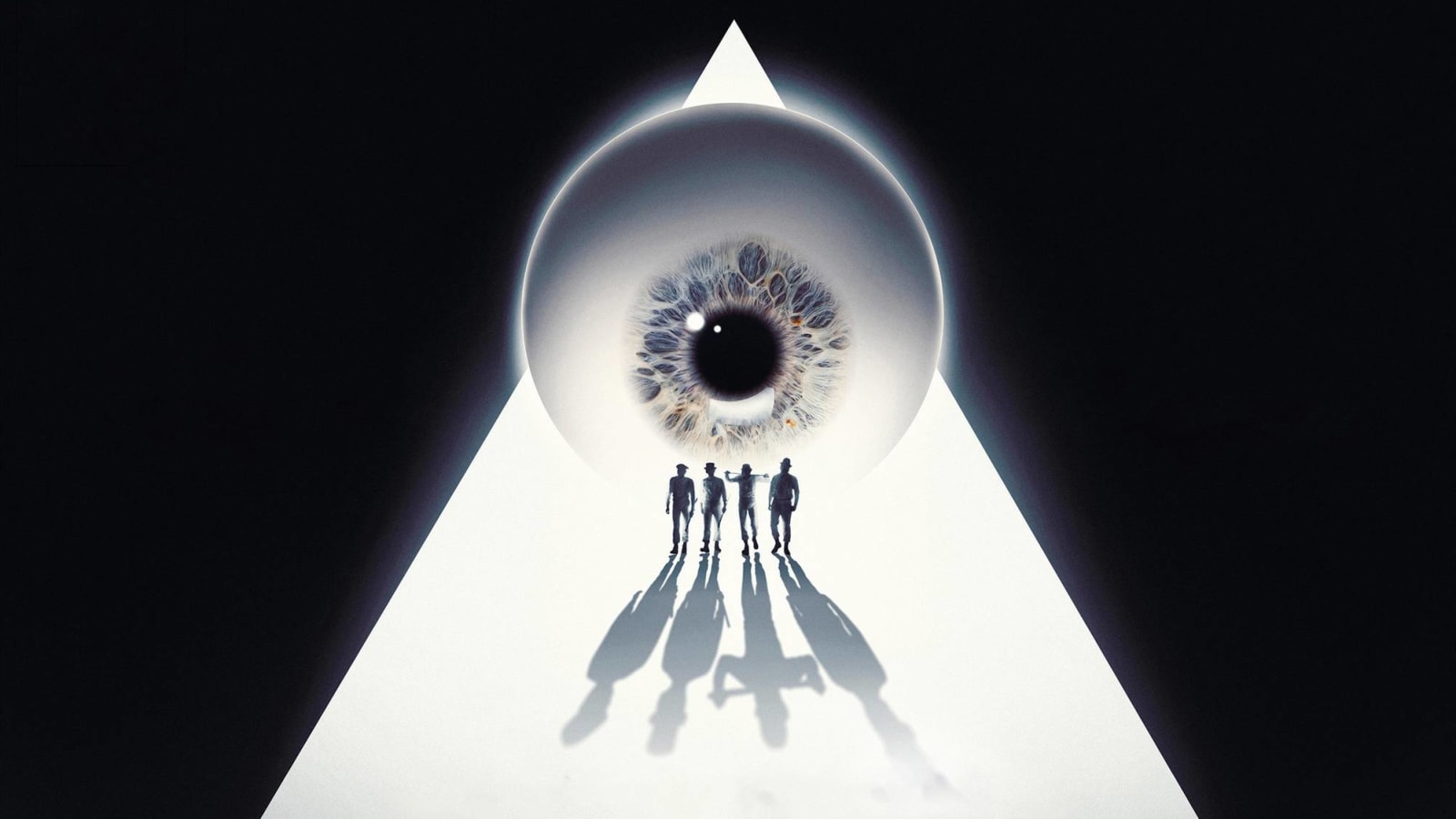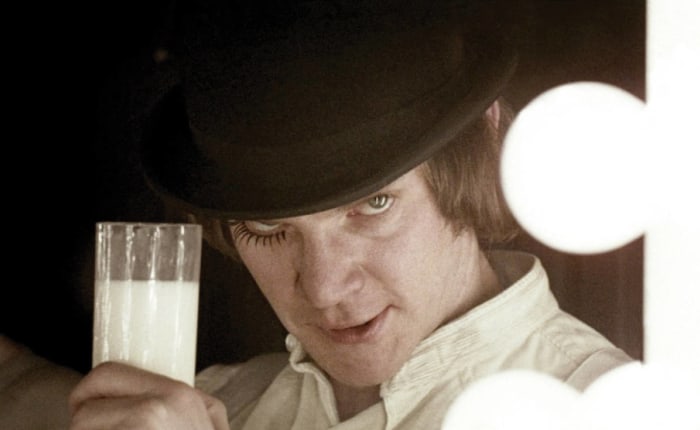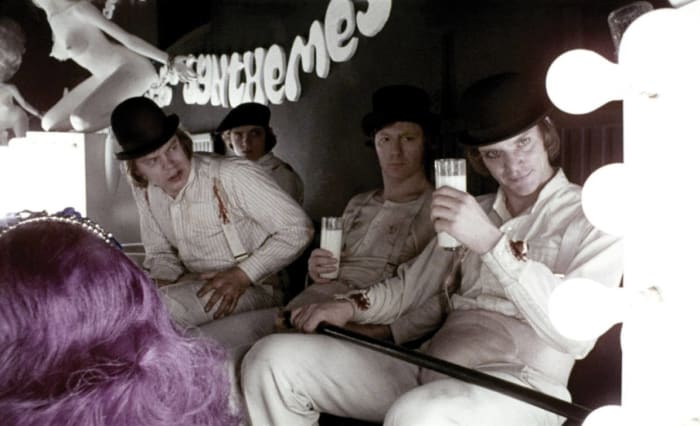- Home
- Quizzes
- My Quiz Activity
- Newsletters
- Sports Betting
- MY FAVORITES
- Add Sports/Teams
- SPORTS
-
NFL
- NFL Home
- Arizona Cardinals
- Atlanta Falcons
- Baltimore Ravens
- Buffalo Bills
- Carolina Panthers
- Chicago Bears
- Cincinnati Bengals
- Cleveland Browns
- Dallas Cowboys
- Denver Broncos
- Detroit Lions
- Green Bay Packers
- Houston Texans
- Indianapolis Colts
- Jacksonville Jaguars
- Kansas City Chiefs
- Las Vegas Raiders
- Los Angeles Chargers
- Los Angeles Rams
- Miami Dolphins
- Minnesota Vikings
- New England Patriots
- New Orleans Saints
- New York Jets
- New York Giants
- Philadelphia Eagles
- Pittsburgh Steelers
- San Francisco 49ers
- Seattle Seahawks
- Tampa Bay Buccaneers
- Tennessee Titans
- Washington Commanders
-
MLB
- MLB Home
- Arizona Diamondbacks
- Atlanta Braves
- Baltimore Orioles
- Boston Red Sox
- Chicago White Sox
- Chicago Cubs
- Cincinnati Reds
- Cleveland Guardians
- Colorado Rockies
- Detroit Tigers
- Houston Astros
- Kansas City Royals
- Los Angeles Angels
- Los Angeles Dodgers
- Miami Marlins
- Milwaukee Brewers
- Minnesota Twins
- New York Yankees
- New York Mets
- Oakland Athletics
- Philadelphia Phillies
- Pittsburgh Pirates
- San Diego Padres
- San Francisco Giants
- Seattle Mariners
- St. Louis Cardinals
- Tampa Bay Rays
- Texas Rangers
- Toronto Blue Jays
- Washington Nationals
-
NBA
- NBA Home
- Atlanta Hawks
- Boston Celtics
- Brooklyn Nets
- Charlotte Hornets
- Chicago Bulls
- Cleveland Cavaliers
- Dallas Mavericks
- Denver Nuggets
- Detroit Pistons
- Golden State Warriors
- Houston Rockets
- Indiana Pacers
- Los Angeles Clippers
- Los Angeles Lakers
- Memphis Grizzlies
- Miami Heat
- Milwaukee Bucks
- Minnesota Timberwolves
- New Orleans Pelicans
- New York Knicks
- Oklahoma City Thunder
- Orlando Magic
- Philadelphia 76ers
- Phoenix Suns
- Portland Trail Blazers
- Sacramento Kings
- San Antonio Spurs
- Toronto Raptors
- Utah Jazz
- Washington Wizards
-
NHL
- NHL Home
- Anaheim Ducks
- Arizona Coyotes
- Boston Bruins
- Buffalo Sabres
- Calgary Flames
- Carolina Hurricanes
- Chicago Blackhawks
- Colorado Avalanche
- Columbus Blue Jackets
- Dallas Stars
- Detroit Red Wings
- Edmonton Oilers
- Florida Panthers
- Los Angeles Kings
- Minnesota Wild
- Montreal Canadiens
- Nashville Predators
- New Jersey Devils
- New York Islanders
- New York Rangers
- Ottawa Senators
- Philadelphia Flyers
- Pittsburgh Penguins
- San Jose Sharks
- Seattle Kraken
- St. Louis Blues
- Tampa Bay Lightning
- Toronto Maple Leafs
- Vancouver Canucks
- Vegas Golden Knights
- Washington Capitals
- Winnipeg Jets
- NCAAF
- NCAAM
- Boxing
- Entertainment
- Lifestyle
- Golf
- MMA
- Soccer
- Tennis
- Wrestling
- More Sports
- RESOURCES
- My Account
- YB on Facebook
- YB on Twitter
- YB on Flipboard
- Contact Us
- Privacy Policy
- Terms of Service

20 facts you might not know about 'A Clockwork Orange'
“A Clockwork Orange” is a truly bizarre choice for a venerated film many consider one of the best ever. It’s incredibly dark and grim, but it isn’t a “based on a true story” movie that feels like eating your vegetables like “Schindler’s List.” No, it’s a depraved film based on an even more depraved book. Stanley Kubrick’s “A Clockwork Orange” is graphic, bizarre, visually arresting, and…possibly a comedy? There is no movie quite like it. Here are 20 facts about this one-of-a-kind (for better or worse) film.
“A Clockwork Orange” came from a prolific writer

Anthony Burgess is the one who came up with the story for “A Clockwork Orange.” He wrote the 1962 novel that the film is based on, and it was one of dozens of books the British author wrote in his career. That being said, none of his other books are terribly famous. On top of that, Burgess has said that Kubrick’s adaptation of his novel is what made his book successful.
Burgess is responsible for the title

“A Clockwork Orange” is an unusual title, to be sure. What does it mean? Well, nothing concrete, to be sure. Burgess used to say that it was part of a Cockney expression he remembered hearing back in the ‘40s, “Queer as a clockwork orange.” Back when the word “queer” was primarily a synonym of “strange,” the phrase “queer as a…” followed by an odd thing was quite common. Over time, though, Burgess would give several different meanings to the name, but they are all dubious. One, for example, says it’s a play on the Malay word “orang,” which means “man.” That’s in spite of the fact there are no other Malay words in the novel at all.
Burgess is also responsible for the slang

Alex and his “droogs” speak in an unusual slang language called “Nadsat.” It’s not real slang but is instead an invention of Burgess. Although, he didn’t come up with it out of thin air like a J.R.R. Tolkien or George R.R. Martin. Instead, it’s mostly a mix of Slavic, Russian, and British rhyming slang.
The author sold the film rights pretty much immediately…and not to Kubrick

Soon after his book was published Burgess sold the film rights to “A Clockwork Orange” for a mere $500. At the time, Kubrick wasn’t attached to the project at all. Instead, Ken Russell was supposed to direct and the Rolling Stones was to star, with Mick Jagger as Alex. That production had trouble getting the go-ahead from the British Board of Film Certification due to the content of the novel and fell through.
The project came to fruition for Kubrick out of nowhere

Terry Southern, who co-wrote “Dr. Strangelove,” gave Kubrick a copy of the novel thinking he would like it. At the time, Kubrick was focused on trying to bring his dream project – a Napoleon biopic that he spent years on but never got to make – to life. As such, he didn’t bother reading the book. Instead, his wife read it, and then she prompted Kubrick to read it. After doing so, he secured the rights and got to work on a screenplay.
Kubrick’s screenplay was based on the U.S. version of the book

There was one issue that Burgess had with the adaptation of his novel by Kubrick. Namely, the fact it did not include anything from the final chapter of the book, which sees Alex “cured” but feeling less taste for violence and considering giving up a life of “ultraviolence” to become a productive member of society. This chapter was not included in the U.S. version of the book, where the editor at his publisher opted for a darker ending. Kubrick used this version for his adaptation, and upon finally reading the last chapter declared it an “extra” chapter that wasn’t necessary.
There are other changes from the novel as well

Kubrick made a few alterations to the novel “A Clockwork Orange” for his film. They ranged from banal things like Alex not having a snake to removing acts of such depraved violence they could not be included in a movie. On top of that, Kubrick gave Alex a last name (he had none in the book) and also aged him up from 15 to 17 or 18. Because a slightly older teenager committing unspeakable crimes is totally palatable.
Kubrick honed in on Malcolm McDowell quickly

There’s not a lot of talk of alternate casting choice for “A Clockwork Orange,” and Kubrick seemed like he had Malcolm McDowell in mind right away. The director had seen McDowell in “If…,” another violent social satire, and decided he was perfect for Alex.
McDowell contributed in other ways

In addition to starring in the film, McDowell is the one who influenced the clothing that Alex and his droogs wear. McDowell showed Kubrick his cricket uniform, and Kubrick liked it, only suggesting they wear their jockstraps on the outside. Purportedly, McDowell also improvised Alex crooning “Singin’ in the Rain,” thereby ruining that song for generations.
There is perhaps one other actor of note

If you are a major movie buff, you might recognize some of the other actors in “A Clockwork Orange.” For most, though, they are largely unknown, at least in America, outside McDowell. However, you assuredly recognize David Prowse, who plays the manservant Julian. Although, you might not recognize his face. That’s because Prowse is best known for being the man in the Darth Vader suit in the original “Star Wars” trilogy.
For a Kubrick film shooting was a breeze

Kubrick was known for his lengthy, meticulous shooting process and being hard on actors. Poor Shelley Duvall can speak to that. McDowell succinctly said of Kubrick that “He likes total control.” However, things seemed to go relatively smoothly and filming only lasted from September 1970 through April 1971. It was the quickest shoot of his career.
McDowell’s body took a beating, though

Even if you haven’t seen “A Clockwork Orange” you have surely seen parodies of the scene involving the “Ludovico technique.” It’s the scene in which Alex’s eyes are pried open to show him a film designed to make sex and violence nauseating to him. The man standing next to Alex and putting eye drops in his eyes? That was an actual doctor putting actual drops in McDowell’s eyes to keep them from drying out. Unfortunately, McDowell suffered a scratched cornea during that scene. Later in the film, he would also crack some ribs.
Much of the film was shot on location

Kubrick loved to shoot in his native England. This is a man who would eventually shoot a Vietnam War movie in England, even if that meant bringing in 100,000 plastic tropical trees from Hong Kong. “A Clockwork Orange” was shot on location all over London. Only a handful of scenes were shot on set, such as the Korova Milk Bar. A place that insane didn’t exist in real life.
“A Clockwork Orange” originally got an X rating

Kubrick’s film is graphic in all the ways a film can be, and that earned it an X rating in the United States upon original release. The director would end up tweaking 30 seconds of sexually explicit content in order to get that knocked down to an R rating in 1972, the year it was released wide (it was given a debut in 1971 in New York in order to be eligible for that year’s Oscars). Meanwhile, the National Catholic Office for Motion Pictures straight-up rated it “condemned,” which prohibited Roman Catholics from seeing it.
It was also unable to be seen in Britain for many years

The United Kingdom gave the go-ahead to “A Clockwork Orange” to be released in theaters, and it was in theaters for a little while. However, it was not without controversy. Quickly, any act of violence being committed by a teenager was connected to the film, either in court or in public opinion. This led to a furor against Kubrick himself. While Kubrick refuted the idea his movie was responsible for people committed violent acts, he requested his film to be withdrawn from release in 1973. It was basically impossible to see “A Clockwork Orange” in Britain until 1999 when Kubrick died and it was finally made available on VHS and DVD.
Other countries banned it as well

Banning “A Clockwork Orange” proved pretty popular. Brazil banned it until a military dictatorship came to an end in 1978. South Africa, in the time of apartheid, banned it, and it did not come out there until 1984. South Korea and the Canadian provinces of Alberta and Nova Scotia banned it for a while. Ireland actually banned it all the way until the year 2000. Lastly, Singapore banned “A Clockwork Orange” all the way until 2011.
And yet, it was a huge financial success

Tell people something is bad for them, and some of those people are only going to be more intrigued. “A Clockwork Orange” cost a mere $1.3 million to make but made a whopping $114 million worldwide. In fact, it was the most popular movie in France in 1972. Hey, we aren’t saying we liked the bans, but we’re also wondering why France was so enthused to see this movie.
The Academy Awards also liked the film

Kubrick picked up three Oscar nominations himself for “A Clockwork Orange,” getting looks for Best Adapted Screenplay, Best Director, and Best Picture. Editor Bill Butler also got a nomination. The movie didn’t win for any of those categories, though. Instead, “The French Connection” took all four of those categories.
Alex and his droogs appear in “Space Jam: A New Legacy”

There is a lot that’s weird to wrap your head around with “Space Jam: A New Legacy.” The movie is something of a fiasco, though a successful one, it’s also an excuse to make use of the Warner Bros. catalog. A ton of characters make appearances in “A New Legacy” from Warner Bros. films. Among those characters you see in the background are Alex and the droogs in their unmistakable outfits. Perfect for a PG movie.
What is the movie about?

“A Clockwork Orange” is violent and sexually explicit. It also often plays like a comedy. What’s the deal with this film? Well, Kubrick is not one of those filmmakers who is shy about explaining his intent or his feelings on his films. Writing for the “Saturday Review” back in the day, Kubrick described his film as such, “A social satire dealing with the question of whether behavioral psychology and psychological conditioning are dangerous new weapons for a totalitarian government to use to impose vast controls on its citizens and turn them into little more than robots.” So yes, according to Kubrick this is a comedy.
Chris Morgan is a sports and pop culture writer and the author of the books The Comic Galaxy of Mystery Science Theater 3000 and The Ash Heap of History. You can follow him on Twitter @ChrisXMorgan.
More must-reads:
Trending in Entertainment
Customize Your Newsletter
 +
+
Get the latest news and rumors, customized to your favorite sports and teams. Emailed daily. Always free!
Use of this website (including any and all parts and
components) constitutes your acceptance of these
Terms of Service and Privacy Policy.

